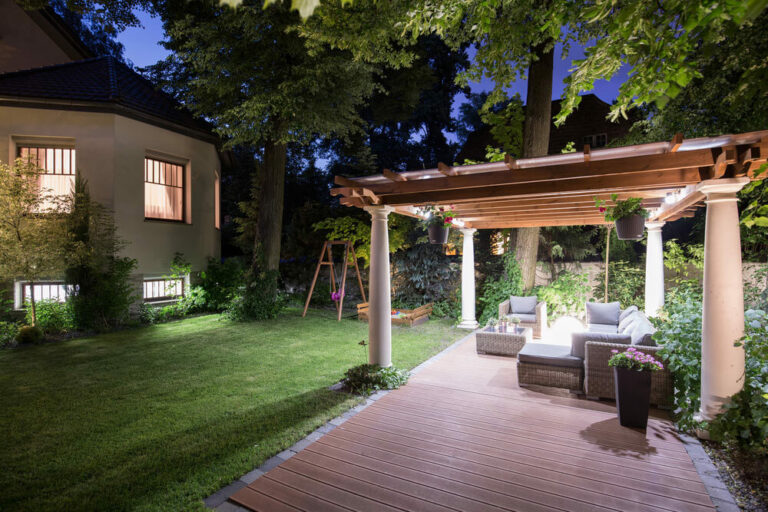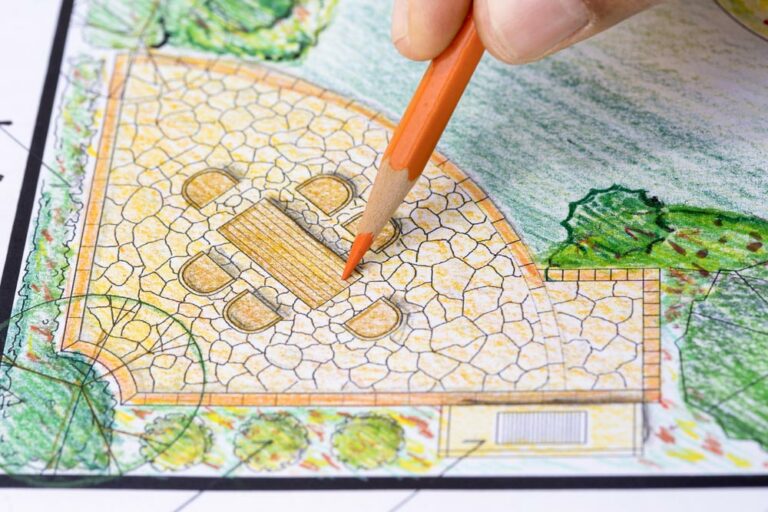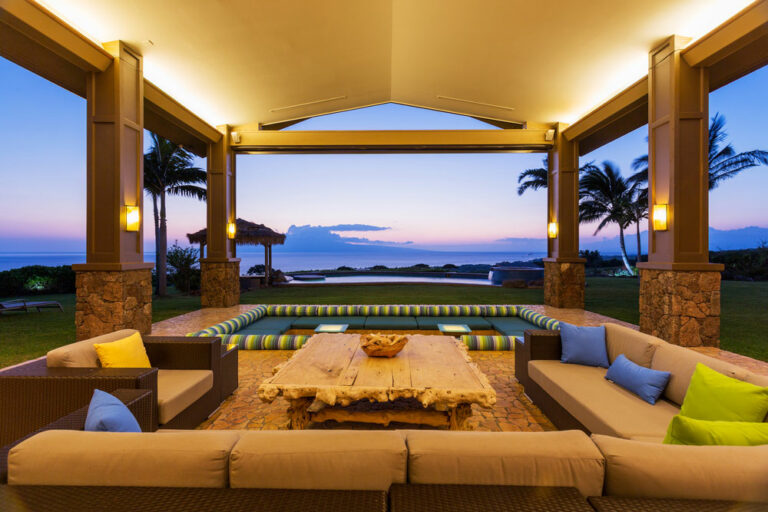Is it time to transform that overgrown garden into an outdoor living haven, or turn the dull courtyard into an alfresco entertaining area? Not sure where or even how to begin? This five step guide to the ultimate outdoor room design will help you to navigate the process of designing an inviting, useful outdoor space you love.
Step 1: Clarify the purpose of the space
When designing your new outdoor living space, the first thing to ask yourself is what will the space be used for? Whether you’re extending outdoors to create another living space for your growing family, or want an elegant alfresco dining area to entertain friends, the purpose of the space will greatly dictate what you create. For an outdoor dining room, access from the kitchen will be a top priority. For a children’s play area, level access or a ramp for little ones might be the most important item to include. Look Here to view articles on Outdoor Living Spaces.
Write a list of all of the things you would like to use your garden for, and a list of things you would like to include. Then work backwards, eliminate unnecessary items until you reach a list that works together for your ultimate outdoor space. This will ensure you end up with a space that’s the most versatile to your needs.
Step 2: Look at the orientation of your space
Unless you’re lucky enough to live in a beautiful countryside setting with views from all angles and space for an outdoor space wherever you please, the orientation of your outdoor room matters. You will need to think about where the sun falls, the natural air flow and cross breezes, and any views of course. If you have a gorgeous view you want to take advantage of, but it’s south facing and doesn’t get much sun, the design of your space will be critical to ensure light and heat flow to the area. If the outdoor space gets a lot of midday and afternoon sun, you may need to think about introducing shade with a patio or awning, a sail, or a portable table umbrella. Again, how you use the space will also dictate the amount of shade, breeze or protection you need.
Step 3: Select your materials
When it comes to building an outdoor room, you’re not quite as spoilt for choice as when building inside, but almost! For flooring, there’s classic merbau timber decking, treated pine, or composite decking, classic brick paving, or mondo grass between pavers, depending on the look you’re after. If you’re building a patio or pergola, exposure to the elements, vicinity to the coast and sunlight will help determine whether corrosion resistant aluminum, timber, or Colorbond steel would be best. You may also need to look at insulated roofing and walls to shelter the space if strong winds or low temperatures are a factor.
Step 4: Furniture design
Outdoor furniture needs to be robust and resistant to the elements. It should also be comfortable and inviting for afternoons lounging in the sunshine or long dinner parties with friends. Whether you choose outdoor lounges or a dining setting, consider bench seats that double as storage boxes. These should be waterproof inside, to store comfy cushions for the furniture when you’re not using it. If bench seats aren’t your style, ensure there is a built-in storage cupboard or garden shed nearby for easy access to these items. Cement and stone table tops and cast iron furniture are all durable, long lasting materials for outdoor furniture; timber is usually a popular cheaper option, and generally gentle on the skin. Take a look online at some of your favourite furniture designs, then draw a plan of the space to see how your furniture will fit and where. Drawing a floorplan is a great way of visualising the space and planning to ensure there is sufficient room before any building starts or large purchases are made.
Step 5: Finishing touches and styling
An outdoor space, just like your interior living areas, isn’t complete without the finishing touches. Consider including mood lighting with festoon or fairy lights, dress up the table with a statement fruit bowl or centrepiece, and decorate with plants, artworks and shelving for storage and styling. If plant maintenance isn’t your forté, look at potted succulents to add colour and life to your tabletop, shelves or garden. Keen gardeners can get a bit more adventurous with seasonal florals, or unique plants like mini bonsai trees. Finally, don’t forget to add in a throw rug or two, a beautiful tablecloth and plenty of plump cushions for comfort, and you have yourself a perfectly styled, inviting outdoor living space.
Once you’ve got the design theme down pat, it’s time to get to work. It’s always a good idea to call in an expert for large or difficult projects, such as building a deck, patio or pergola. You may also need council approval for certain structures, but experts like Wizard Home Improvements can help sort all of that out for you. So what are you waiting for? It’s time to start planning that dream alfresco room. Contact Wizard today for help getting thins done the right way.




